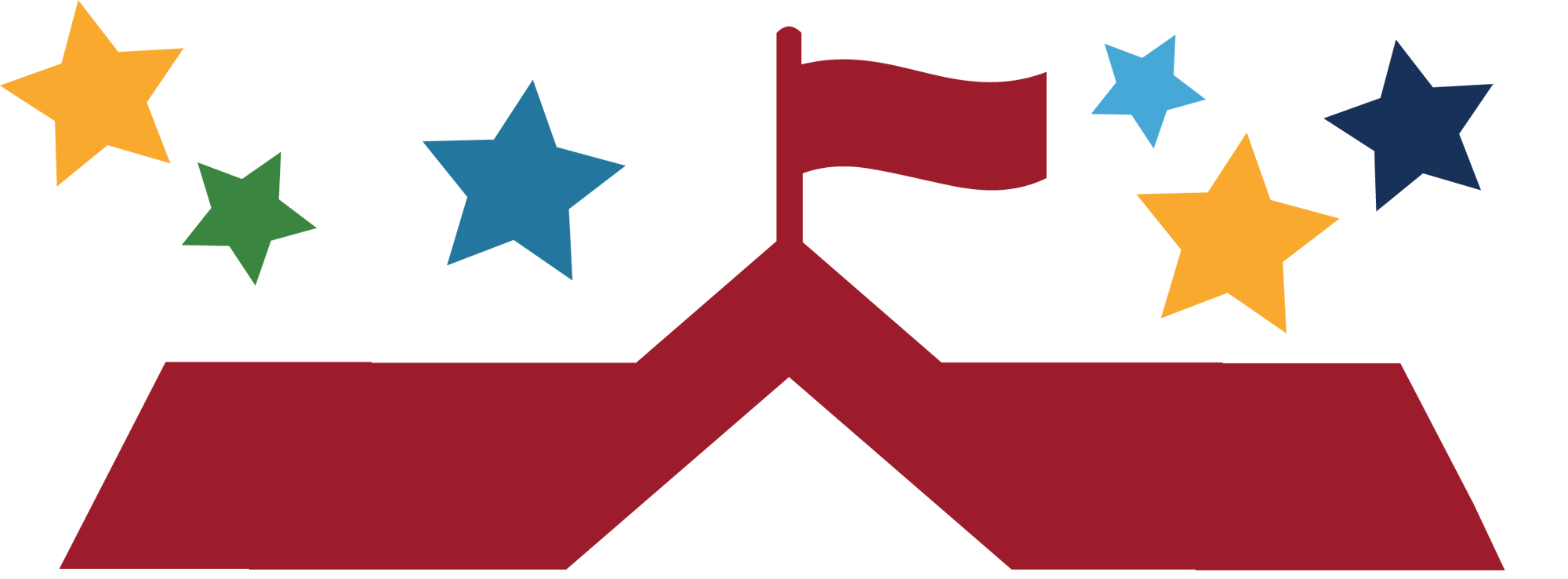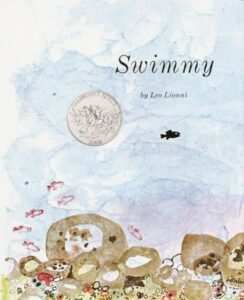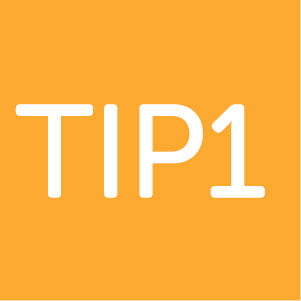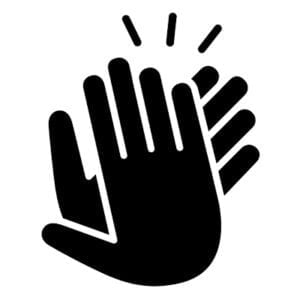Works and Plays Cooperatively with Others
What does “Works and Plays Cooperatively With Others” mean?
This skill relates to the positive relationships a child has with other children. School provides chances for children to work and play together in a give-and-take manner. A child works and plays cooperatively when they take part in a shared activity and allow other children to contribute. For example, a child shows this skill by helping another child clean up or by listening to another child’s ideas. This skill helps children learn from others and work well in a group.
What does this skill look like?

At Home
Nora and her brother, Ben, both want to play with dinosaurs at the same time. Nora asks Ben if he wants to play with the dinosaurs together. Ben agrees and suggests that they each pick a dinosaur and make up a name for them. Nora thinks this is a great idea and says they can use her green blanket to make a forest for the dinosaurs.

In The Classroom
Owen, Kyrie, and Gabriella are working on a group activity to sort shapes. Owen is confused by the activity and asks Kyrie and Gabriella for help. Kyrie and Gabriella explain the directions the teacher gave. Owen understands the activity now and offers to collect all the squares. Kyrie says that he will look for the triangles, and Gabriella says she will find the circles. They work together to get the job done.
 Children can see the value of “Works and Plays Cooperatively With Others” in the book:
Children can see the value of “Works and Plays Cooperatively With Others” in the book:
Swimmy
For more information about this book and other books that highlight this skill, visit our READING LIST page.
TIPS FOR FAMILIES
How can I explain this skill to my child?
Let children know that to succeed you must learn to work and play with others, like when you’re on a team. Being part of a team means learning how to work well with your teammates so you can get things done. Sometimes this means you won’t get everything you want, but being part of a team means learning to compromise with others. When we learn how to work and play well with each other, we make our team the strongest it can be and our team wins!
What are some things I can do to help my child learn this skill?

Do an activity with your child where you both can contribute. For example:
- Read a story or watch a show with your child.
- Halfway through the story or show take a break and talk with your child about what the ending might be. Let your child guess first and then share your guess.
- Together with your child, come up with a shared guess of what will happen. This may mean negotiating or compromising to find something you both agree on.
- You and your child can also draw a picture together of the ending you agreed on. Ask your child to describe the picture when it’s finished and name the parts of it that each of you added. For example, “I drew the sun and the grass, and you drew the people”.
- Finish the rest of the story or show and compare the ending to the one you decided on together.

Make an appreciation notebook. Set up a notebook where your child can write or draw notes of appreciation when someone in your family does something nice. For example, if your child’s sibling shares a toy with them, they can write a note or draw a picture about their sibling sharing in the notebook. Your child can choose to give the note or drawing to the person who did something nice, share the note with you, or leave it in the notebook.

Create a job for the entire family. Show your child how working together can help you complete a job and get a reward. For example, ask the whole family to work together to set the table for dinner. Give each person a different part of the job to do. For example, one person gets plates and another person puts out drinks. Tell your child that if everyone does their part of the job, then the whole family gets a reward, like having ice cream for dessert. Make sure your child knows that the only way to get the reward is if each person helps and everyone works together.

Keys to connecting. Finding ways to connect with others can be hard for children. You can help your child learn how to positively engage with others by talking about and modeling these keys to connecting:
Listen. Remind your child that everyone likes to be heard and respected. Tell your child that they should listen when others are talking to understand their thoughts and feelings.
Ask a question. Tell your child to ask a question when in a group setting to show that they are interested in other people’s thoughts and feelings. Tell your child to wait for others to finish speaking before asking a question. For example, when building a block tower, a child could ask their friend or sibling how tall they want to build the tower.
Contribute. Suggest that your child offers a way to help with a shared activity. For example, when doing a puzzle with others, your child could offer to find all of the blue pieces.
Show support. Let your child know that they can participate by giving a compliment. For example, when coloring with a friend or sibling, your child could say what they like about the other person’s drawing.
How can I encourage my child when I see them trying to learn this skill?
Acknowledge your child for their efforts! For example, tell your child, “Wow, Mariah! You worked as quickly as you could to clean up your toys,” or “Asher, you did a great job of getting dressed in time for school today!” Click here for more ideas on how to encourage your child.
To download a printable PDF of the tips for this skill, click here.
TIPS FOR TEACHERS
How can I explain this skill to children?
Let children know that the class is like a team. When we learn how to work and play well with each other, we make our team the strongest it can be. Being part of a team means learning how to cooperate with your teammates so you can get things done. When we work and play well together, our team wins!
What are some examples of best practices from educational experts and fellow teachers?

Think-pair-share. Create learning opportunities that require children to work together. One way to do this is through pair and small group work. Give children a prompt that makes them think creatively. Then, put them in pairs and give them a cooperative task to do based on their creative thinking. Finally, have them share their work with the rest of the class.
Here is an example of a think-pair-share activity:
- During literacy time, read halfway through a book and stop.
- Ask children to think about what the ending of the book might be.
- Create groups of two or three and have them discuss their ideas about how the book might end and try to come up with one ending that they all agree on.
- Within their groups, have the children work together to draw a picture of the ending they have created, with each person contributing something to the drawing.
- Have each group show their picture to the class and describe the ending they imagined for the book. Ask each child what part of the picture they added to the whole.
- After each group shares their work, read the ending of the book to the class.

Create sharing teams. Instead of a show-and-tell activity where one student presents to the entire class, create smaller groups of three where each child is assigned a role. Each week, one child can be the sharer, one child can be the explorer, and one child can be the applauder.
- The sharer’s job is to share something with the group.
- The explorer’s job is to ask questions about what the sharer has talked about.
- The applauder’s job is to positively recognize something about what the sharer said.
Use a chart like the one below to remind children what each person is supposed to do. Have children rotate roles every week. Once they have all had a turn with each role, create new groups of three and begin again.
OUR SHARING TEAMS
SHARER |  | Share something for five minutes. |
EXPLORER |  | Ask the sharer three questions about what they shared and listen closely to what they say. |
APPLAUDER |  | List three things you liked about what the sharer told the group. |

Tootle notes. Give children the power to recognize and praise each other to help them build cooperation and positive relationships. Instead of tattling on their friends when they do something wrong, teach children to “tootle.” Tootling is when we “tell on” our peers for doing something right. Here are some ways that children can tootle:
- When children see a peer do something positive, such as sharing crayons, they can give their peer a “toot” by recording their good behavior with a note or a drawing.
- Children can give each other these notes to show their appreciation.
- You can set up a box in the classroom where children can put these notes or drawings if they don’t want to give them directly to their peers.

Collective goals. Give the entire class a goal that they must work together to achieve. At the end of the activity, encourage children to talk about ways they worked well together to get the job done.
Here is an example of a project with a collective goal:
- Let children know that the whole class will be doing an art project. If they work together to complete it, they can hang it up in the classroom.
- Give every child two strips of paper. Ask them to draw a picture on one strip and write their name on the other.
- Once everyone creates a drawing and writes their name, the strips can be linked together to create a paper chain that can be displayed in the room.
- Let children know that they can help each other. For instance, if one child is struggling to write their name, a peer can help out.
- Remind them to share the art supplies so everyone can complete their strips.
- At the end of the activity ask the class, “How did we work together well to make our chain? Could we have made this chain if we didn’t work together? What are other activities we can do together at school?”
- Write out children’s responses to the last question on a big piece of paper and post it in the classroom as a reminder of what we can get done when we work together.

Keys to connecting. Finding ways to connect with others can be hard for children. You can help children learn how to positively engage with others by talking about and modeling these keys to connecting:
Listen. Remind children that everyone likes to be heard and respected. Tell children that they should listen to what others are saying to understand their thoughts and feelings.
Ask a question. Suggest that children ask a question when in a group setting to show that they are engaged. Tell them that they should wait to talk until others are done speaking. For example, when building a block tower, a child could ask the other children how tall they want to build it.
Contribute. Tell children they can connect with others by offering a way to contribute to the activity. For example, when doing a puzzle with others, a child could offer to find the blue pieces.
Show support. Children can also positively engage with others by complimenting the work or thoughts of a group member. For example, when making a group art project, a child could say what they like about another person’s drawing.
How can I encourage children when I see them trying to learn this skill?
Acknowledge children for their efforts! For example, say, “Wow, Owen! You worked so hard to help Kyrie and Gabriella put that puzzle together” or “Nora, aren’t you proud of yourself for playing that game so nicely with Ben?” Click here for more ideas on how to encourage children.
To download a printable PDF of the tips for this skill, click here.

Start your morning with Conquering Kindergarten!
Hey teachers, want to incorporate Conquering Kindergarten into your community meeting each morning? Go to the district’s Community Meeting App to find ready-to-use slides highlighting this skill. Filter content in the app by Conquering Kindergarten or by a specific skill to get access to interactive and engaging slides tailored to the community meeting format.
To learn more about the tips and where they came from, please visit our references page.
